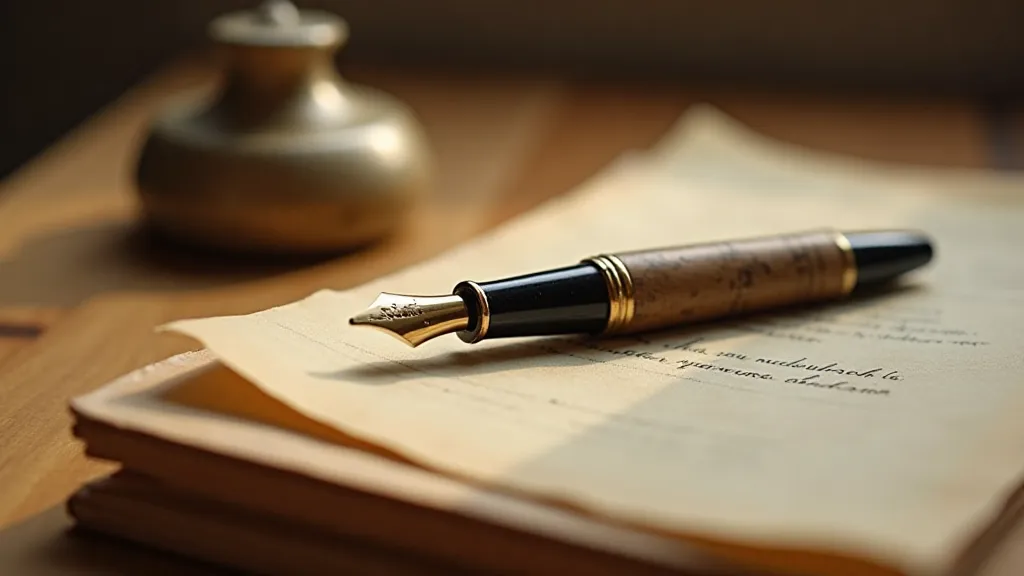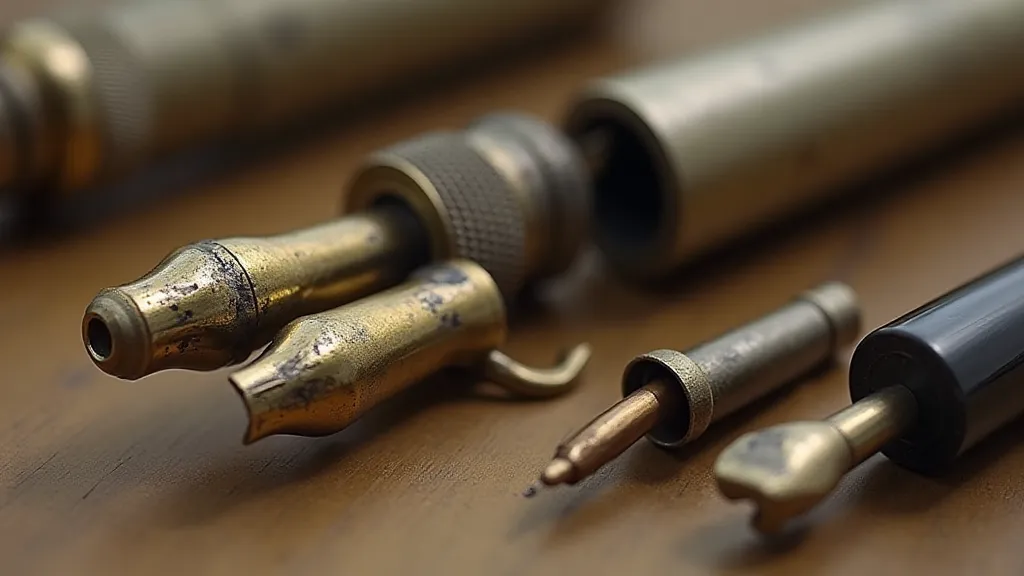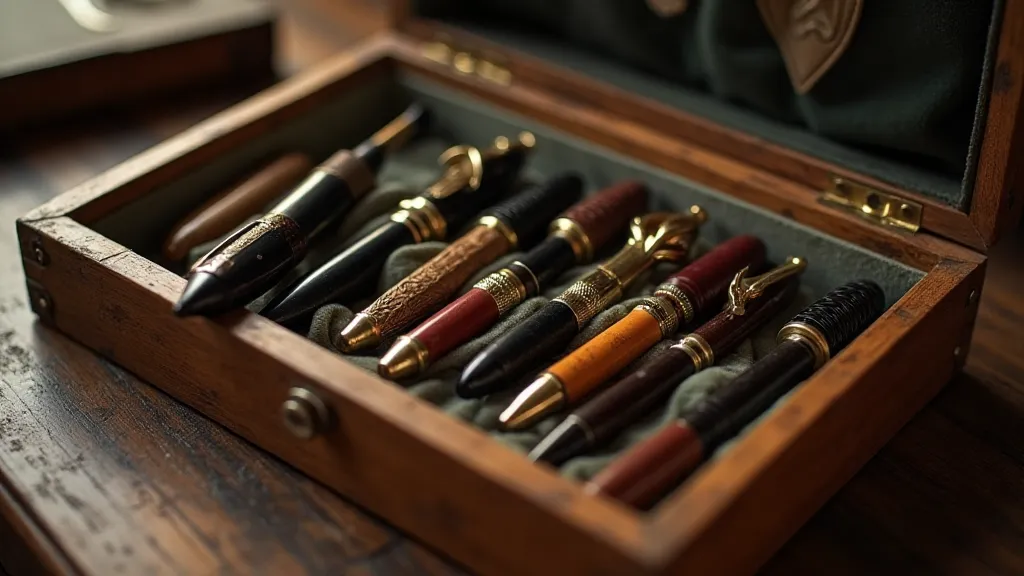The Weight of Words: How Pen Feel Influences Narrative Flow
There’s a peculiar, almost forgotten intimacy in the act of writing with a vintage pen. It’s more than simply transferring thoughts to paper; it's a conversation, a dance between hand and tool, and it's profoundly shaped by the very feel of the writing instrument. We live in a world dominated by sterile keyboards and the ephemeral nature of digital text. But holding a well-worn antique pen, feeling its weight, experiencing the slight resistance of its nib against the paper—that’s something altogether different. It's a tactile connection to history, to craft, and to the very rhythm of language.
I remember the first time I truly understood this. I was a young man, rummaging through a dusty antique shop with my grandfather, a retired English professor and a lifelong collector of beautiful things. He stopped abruptly, his gaze fixed on a small velvet-lined case tucked away on a high shelf. Inside lay a Parker Duofold from the early 1920s. The weight of it in my hand was surprising – substantial, but balanced. The feel of the celluloid, cool and smooth against my skin, was unlike anything I'd experienced before. My grandfather, a man of few words, simply said, "Try it."
Writing a few sentences with that pen was transformative. My handwriting, usually rushed and uneven, suddenly slowed, became more deliberate. The flow of my thoughts seemed to mirror the feel of the pen, becoming more measured, more thoughtful. It wasn’t a dramatic change, but it was undeniably there. That day, I didn’t just acquire a pen; I gained a lesson—a quiet revelation about the subtle art of writing.

The Craftsmanship Tells a Story
The feeling of an antique pen isn't just about the material—the celluloid, ebonite, or precious metals—it’s about the years of skill and artistry that went into its creation. Early pen manufacturers like Waterman, Montblanc, and Parker weren’t just making writing instruments; they were creating works of functional art. The thickness of the barrel, the angle of the nib, the precise balance of the pen – each element was meticulously considered. These weren't mass-produced items churned out by machines; they were the product of dedicated craftsmen, each taking pride in their work. Understanding how the passage of time affects these objects—the subtle patina that develops, the faint wear on the cap—is a fascinating aspect of appreciating their history. You might find yourself drawn to exploring ink's ephemerality and the way it relates to the aging of collectible pens.
Consider Waterman, a pioneer in the early days of fountain pen manufacturing. T.A. Waterman, a former insurance agent, saw an opportunity to revolutionize writing with a reliable and convenient fountain pen. His early pens were known for their innovative designs and exceptional ink flow – a significant improvement over the dip pens of the era. The sheer engineering that went into designing a reliable filling system, especially in those early years, is remarkable. He understood that the experience of writing wasn’t just about putting ink on paper; it was about the feel, the reliability, and the overall impression of luxury and quality.
Or take Montblanc, established in 1906 in Hamburg, Germany. Their early pens, inspired by the elegant pens of Perugia, Italy, were designed to be luxurious and long-lasting. The meticulous detail in their nib grinding, the quality of their materials – it all contributed to a writing experience that felt exceptional. These weren't just pens; they were status symbols, heirlooms meant to be treasured for generations. The resonance these pens evoke – the feeling of connection to the past, the appreciation for artistry – is something that many collectors find deeply satisfying. It’s a collector’s resonance, a palpable link to a bygone era.
The Weight of History
Holding an antique pen is more than a tactile experience; it’s a connection to history. Think of the writers who have held similar pens – poets, novelists, journalists, diplomats – their thoughts flowing from the nib onto the page, shaping our understanding of the world. The pen becomes a conduit, linking us to their creativity, their struggles, and their triumphs.
Imagine Ernest Hemingway, meticulously crafting his prose with a sturdy Waterman. Or Virginia Woolf, carefully shaping her stream-of-consciousness narratives with a delicate Montblanc. These pens were silent witnesses to countless moments of inspiration and creative toil. Holding them evokes a sense of shared experience, a feeling of being part of a lineage of writers and thinkers.
The wear and tear on an antique pen – the slight scuffs on the barrel, the patina on the cap – these aren't imperfections; they are marks of a life well-lived, a testament to the countless hours spent in the service of writing. They tell a story of their own—a silent narrative of dedication and creativity. The very design of these pens, the materials chosen, reflect the aesthetic sensibilities of the time. Considering how these design elements shaped writing styles is fascinating. It’s easy to imagine how different approaches to pen design have left their mark, influencing the ghost of ink and how early pen designs echo lost writing styles.

Finding Your Flow: Pen and Narrative
The influence of a pen's feel on writing flow is subtle, yet profound. A heavier pen, with a thicker barrel, can encourage a slower, more deliberate pace, leading to more thoughtful prose. It can ground your writing, preventing it from becoming too rushed or frenetic. A lighter pen, on the other hand, can feel more nimble, allowing for a more fluid and expressive style.
The nib’s responsiveness also plays a vital role. A flexible nib, common in early pens, allows for subtle variations in line width depending on the pressure applied, adding character and personality to your handwriting. Mastering this responsiveness takes practice, but the rewards are well worth the effort. It allows you to inject a level of nuance and expression that’s simply not possible with a modern, standardized pen.
Restoring antique pens, when done carefully, can enhance this connection. Replacing a dried-out sac, cleaning the nib, and polishing the barrel – these small acts of restoration can breathe new life into a treasured artifact, allowing it to once again serve its intended purpose: to facilitate the flow of words. The tradition of craftsmanship that went into these pens isn't just about the manufacturing process; it's about the passing down of skills and knowledge through generations of artisans. The families behind these brands often have a chronicle of craft, a rich history of pen-making traditions.
Collecting and Preservation
For those drawn to the romance of antique pens, collecting can be a deeply rewarding pursuit. The sheer variety of brands, models, and materials is astonishing. From the elegant simplicity of Waterman's early pens to the opulent grandeur of Montblanc’s Meisterstücks, there’s a pen to suit every taste and budget.
However, collecting antique pens is about more than simply acquiring objects. It’s about appreciating the craftsmanship, preserving history, and honoring the legacy of the writers and thinkers who used these instruments to shape our world. Proper storage, careful cleaning, and responsible restoration are essential for ensuring that these treasures are enjoyed for generations to come. It's a way of safeguarding a tangible link to the past, ensuring that the skills and artistry of previous generations are not forgotten.

Ultimately, the true value of an antique pen isn’t measured in monetary terms; it’s measured by the joy it brings, the stories it inspires, and the connection it fosters between the writer and the word.





